The new Archaeological Museum of Athens focuses on the harmonious symbiosis of two regional conflicting forces. On the one hand, the impenetrable and continuous mass of the city and on the other the enclosed grove of the Plato Academy with the archaeological excavations. The building program of the museum presupposes the construction of a large volume that will be imposed on the grove, limiting the surface of the valuable public space. Instead, the majority of the museum's surface is developed underground and locally affects the terrain, creating smooth outcrops and pits that enhance the horizontal topography. The museum interacts with the existing field and is harmoniously transformed into a building-ground.
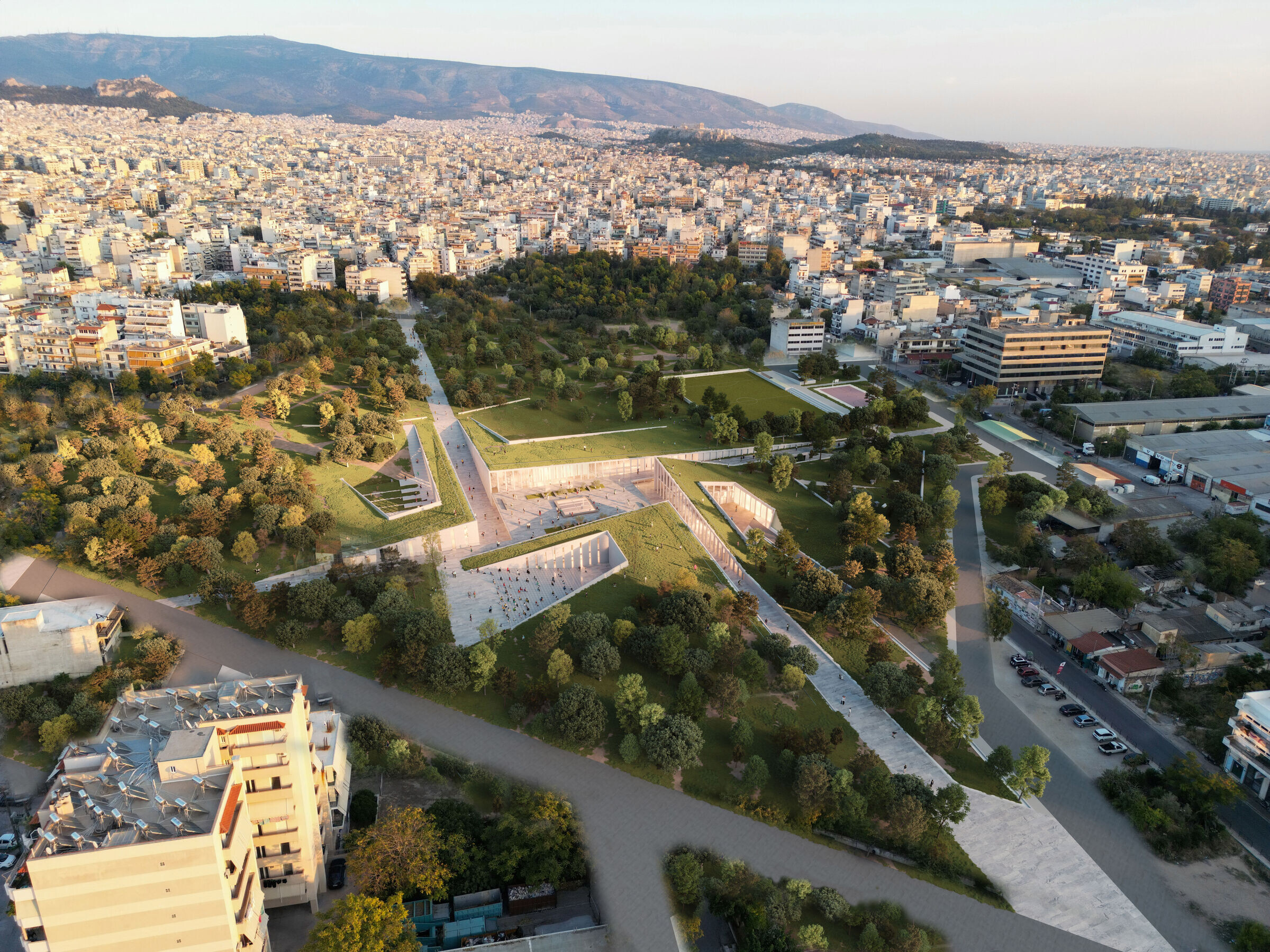
The architectural approach supports the innovation of the museum as it emphasizes topography, urban planning and public archaeology, since it creatively integrates both the axes of the landscape and the urban planning of the city, while embracing on the one hand the archaeological finds within the space, on the other hand relationship of open and closed, public and private.
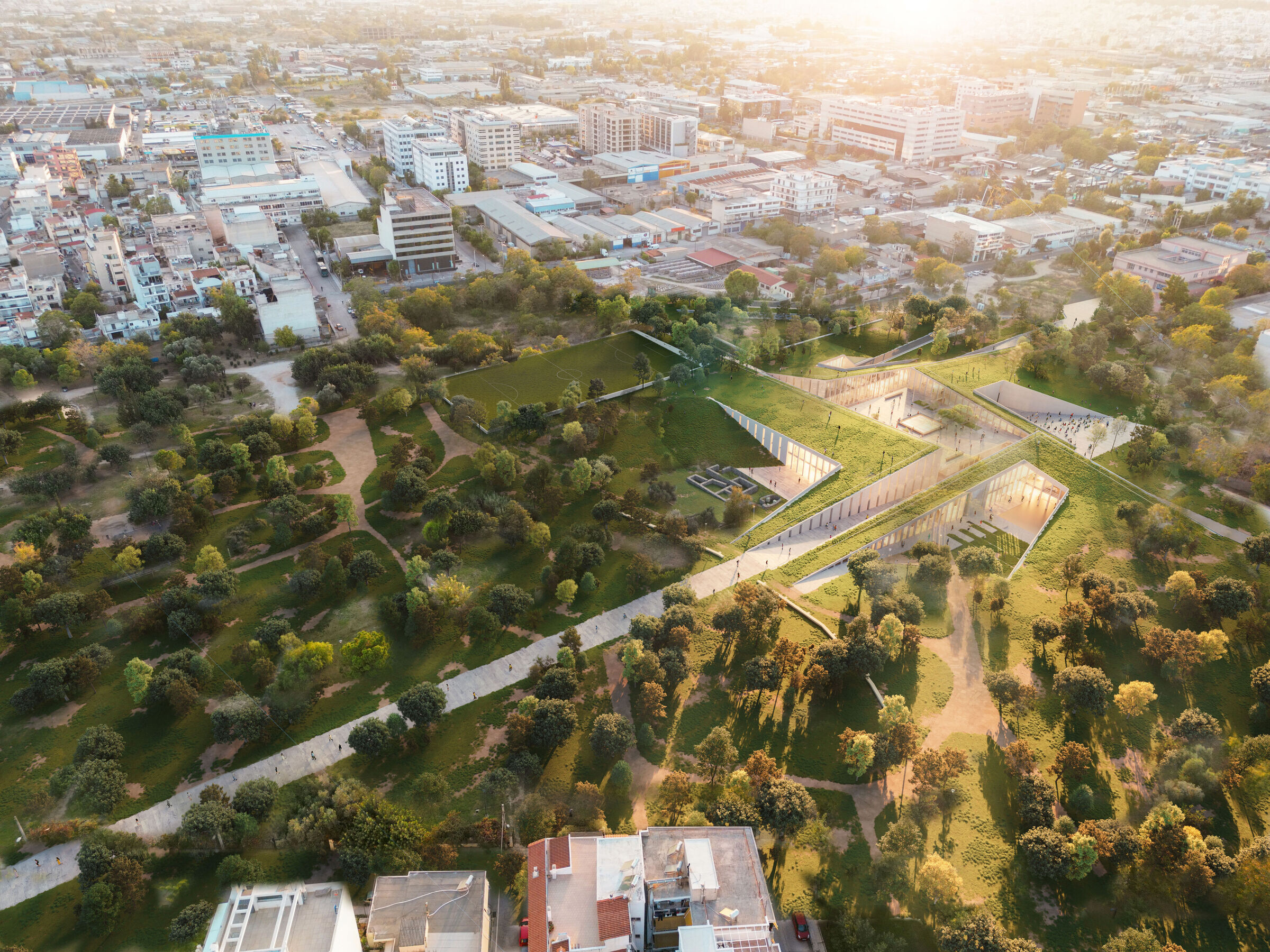
The city and the grove interact in the center of the plot creating a hub of swirling movement that acts as a centripetal and at the same time a centrifugal force of flows and activities.
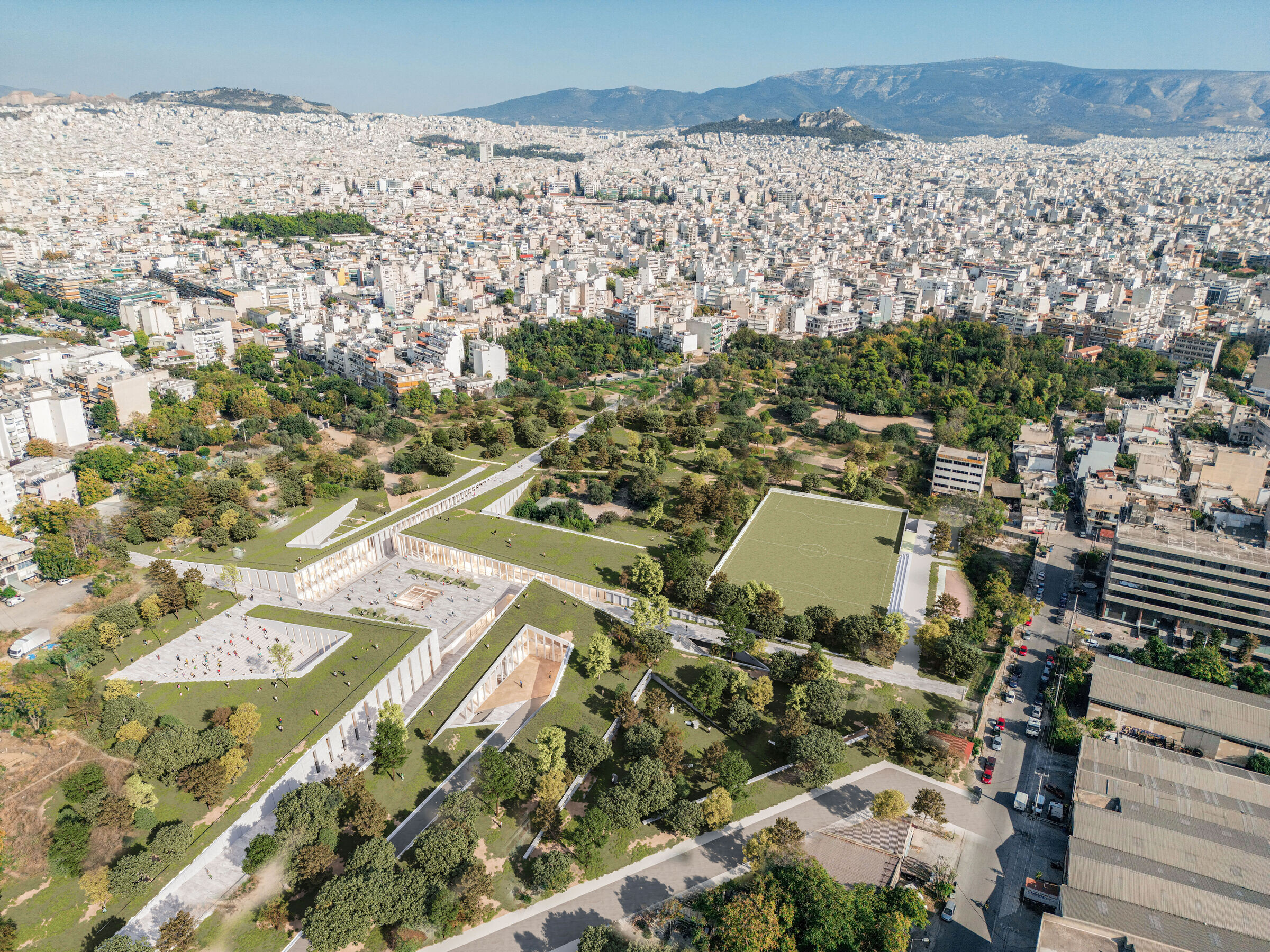
The polar etching creates a rectangular rift in the center where it slices the space into four distinct wings. The roofs emerge from the ground, presenting sloping, walkable surfaces, extending the existing planted area of the grove while at the same time ensuring comfortable conditions of natural lighting and ventilation, for both visitors and employees.
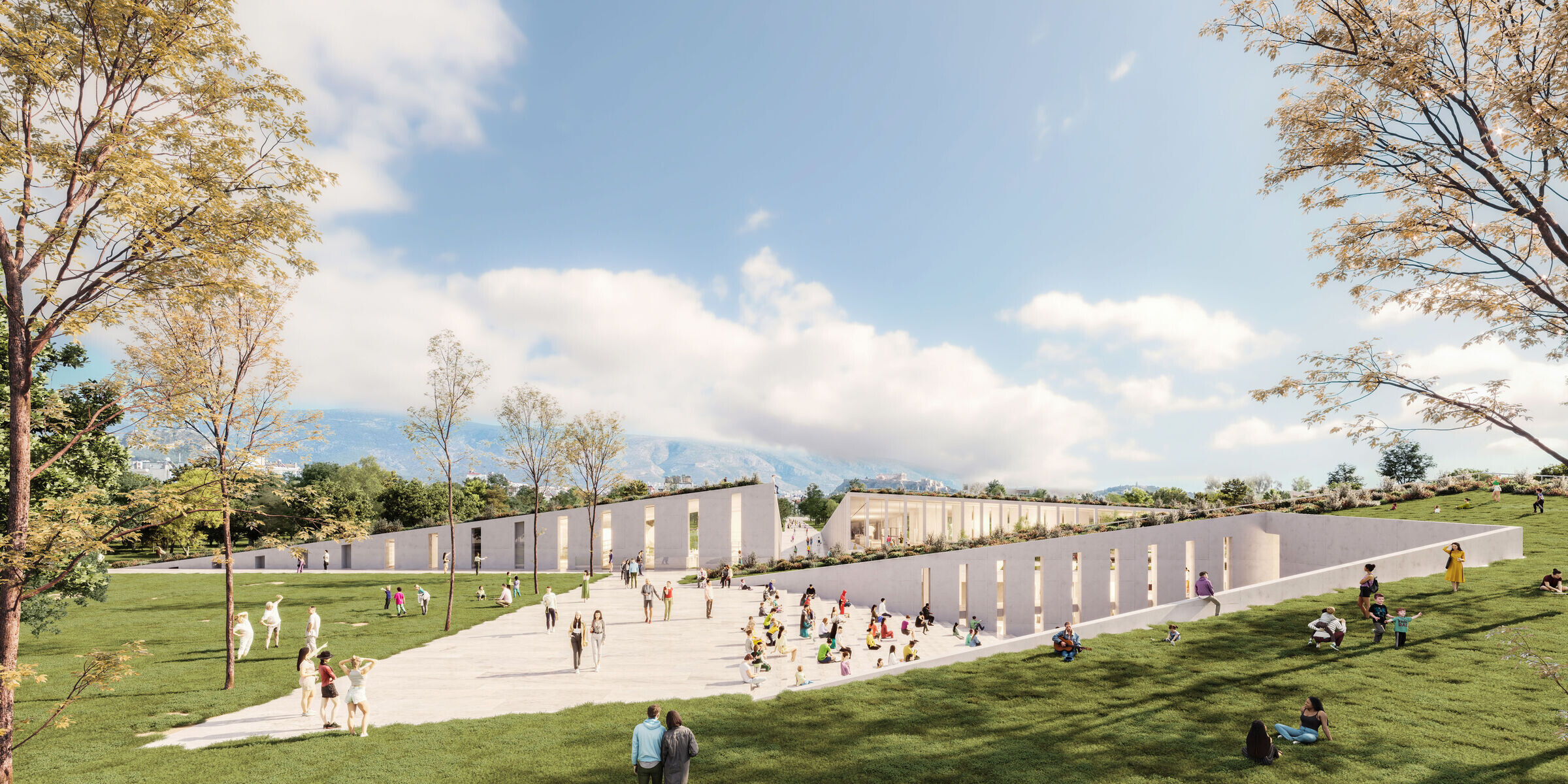
The clarity and flexibility of the exhibition spaces acknowledges the basic principle that the city is a living organism, which is constantly mutating. The alternation of closed and open spaces, the possibility of viewing the interior of the museum from different perspectives and to a different degree aim to create a relationship of intimacy between the museum and the visitor that will lead even non-visitors to feel comfortable walking through the museum's doors or share his messages.
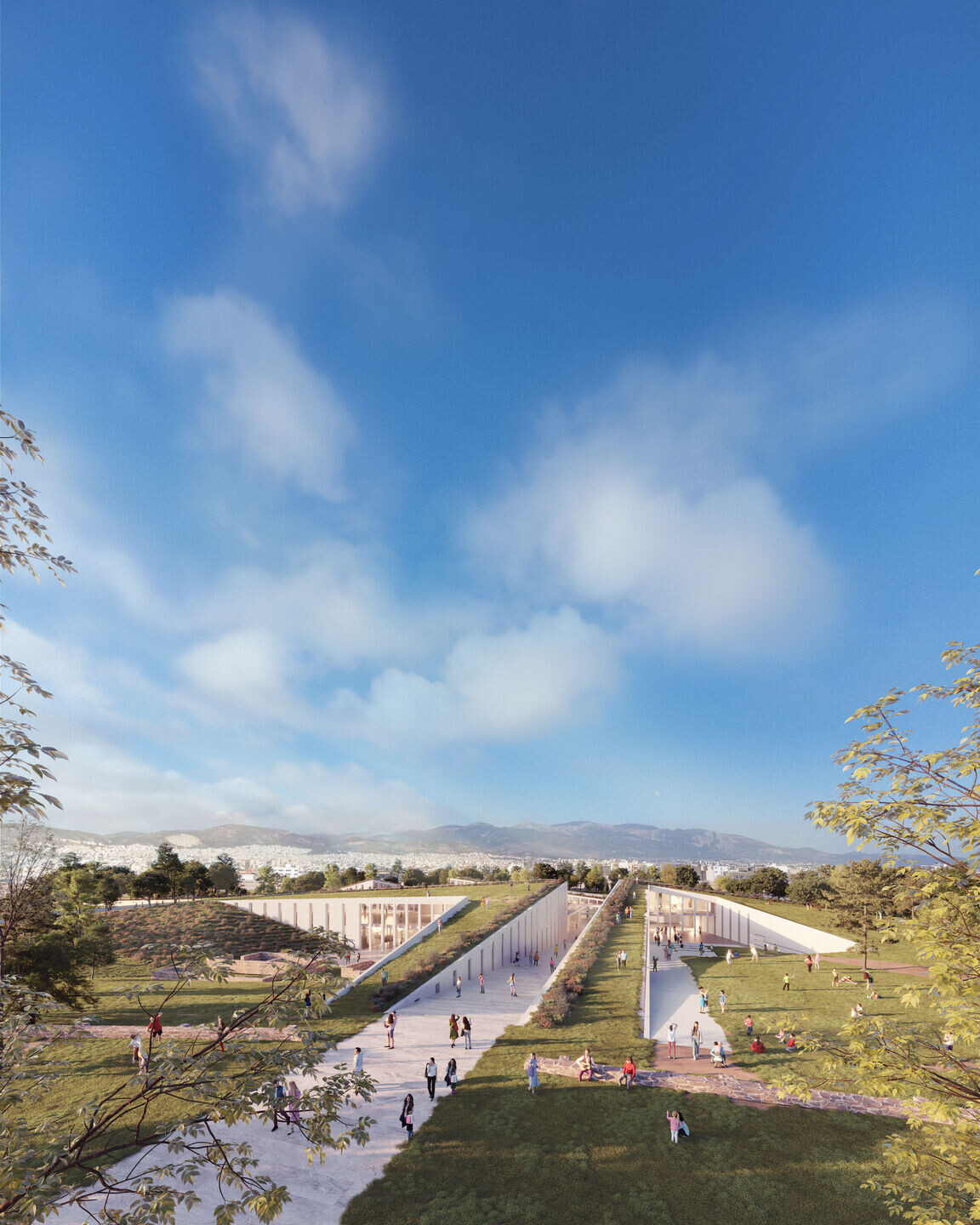
The proposal emphasizes the design of a public space that includes the museum, archaeological excavations and recreational and sports areas, encouraging participation. The design principles of the new Archaeological Museum project the vision of the Athens of the future. A city that relates the building infrastructure to the natural terrain and landscape, a city that respects, highlights and coexists harmoniously with nature and its history, including all its citizens.





























